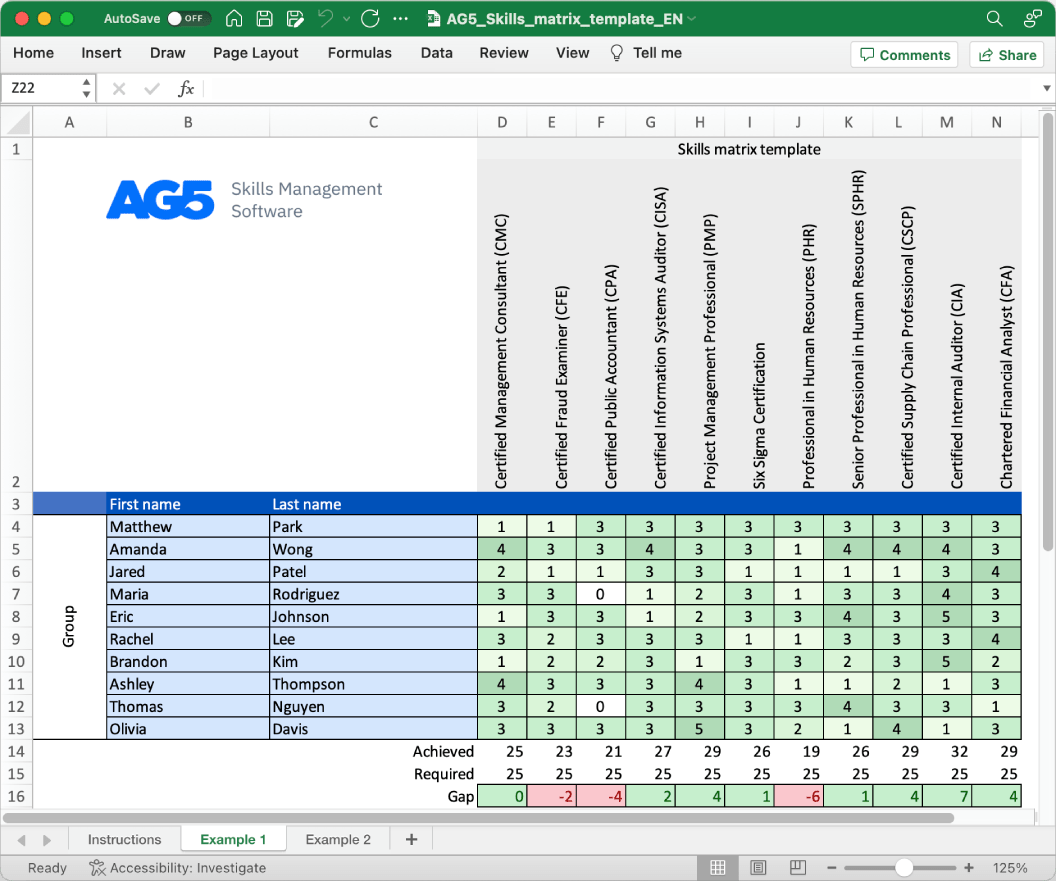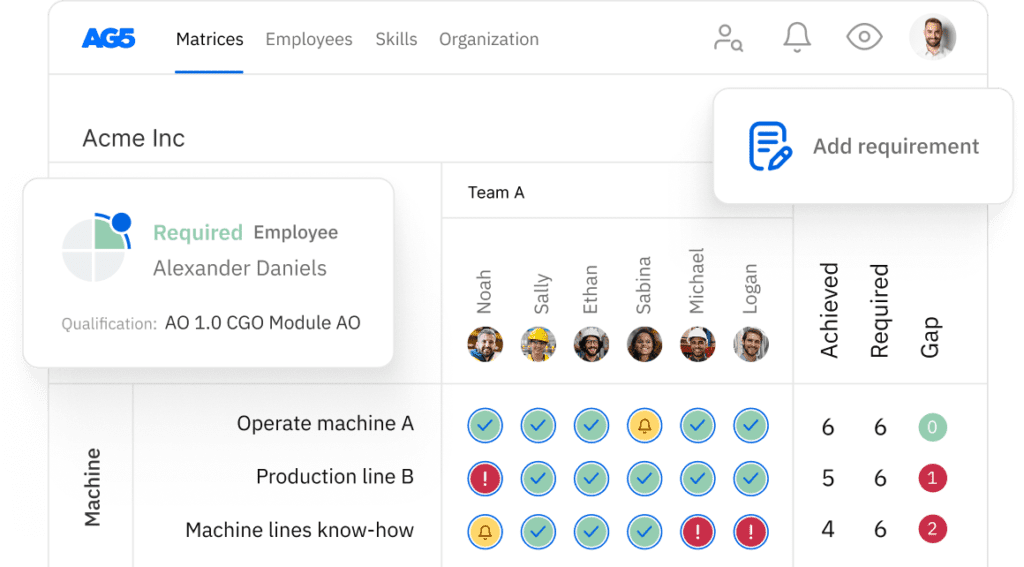Electromechanical skills matrix template
A skills matrix template is a tool that organizations can use to effectively manage and assess the skills and certification statuses of individual employees or teams.
Download your free template here

Overview Copied
You can use this electromechanical skills matrix to monitor the certification statuses of employees tasked with troubleshooting automated machinery and production systems.
Electrical
- Circuit analysis and troubleshooting
- PLC programming (ladder logic, structured text)
- Motor control systems (VFDs, servo motors)
- Electrical wiring and panel assembly
- Sensors and instrumentation (proximity, optical, load cells)
- Certified Electrical Technician (CET)
- Siemens PLC Certification (Siemens SITRAIN)
Mechanical
- Hydraulics and pneumatics systems
- Bearings, gears, and power transmission maintenance
- Precision machining and tolerancing
- Welding and fabrication techniques
- Structural analysis and mechanical failure diagnostics
- Hydraulic Specialist (HS)
- Certified Maintenance & Reliability Technician (CMRT)
Automation & Control
- Robotics programming and integration
- Industrial control systems (SCADA, DCS)
- HMI (Human-Machine Interface) configuration
- Mechatronics system design
- Automated troubleshooting and predictive maintenance
- Certified Control Systems Technician (CCST)
- Certified Automation Professional
General & Analytical
- Blueprint and schematic reading
- Thermodynamics and heat transfer principles
- Root cause analysis and failure mode analysis (FMEA)
- 3D CAD modeling for electromechanical components
- NFPA 70E electrical safety training
- Six Sigma Green Belt
- OSHA 30-Hour General Industry certification
How can I customize my electromechanical skills matrix to fit a specific team? Copied
The scope of an electromechanical skills matrix can be as large or small as you choose. For example, it could cover your entire organization – or only those focused on hydraulics and pneumatics systems.
To customize a skills matrix to your needs, you should:
- Define focus. Clarify if the skills matrix pertains to an entire department or specific roles within it
- Identify key skills. List essential competencies for each role or area of operation
- Establish proficiency levels. Define skill proficiency levels, aligning them with job requirements
- Set evaluation criteria. Create a clear evaluation process, considering on-the-job performance and training qualifications
- Regularly review and update. Ensure regular reviews to adapt to evolving roles, technologies, and organizational goals
Do you require a skill or certification that is not included in the above list? No problem! You can easily add additional certifications yourself to customize the skills matrix to your organization’s needs. You can also add your own employees and how they score against each certification.
Not sure what scoring system to use? Check out our “Ultimate Guide to Creating an Excel Skills Matrix.”
Looking for alternatives to Excel for your skills matrix templates? Copied
AG5’s skills management software enables you to visualize and close skills gaps across your organization – no need for complicated Excel spreadsheets. You’ll use intuitive skills matrices that bring together skills data and job requirements – and are always up to date.
FAQs Copied
-
What are the benefits of using an electromechanical skills matrix?
-
Is this electromechanical skills matrix free to download?
-
How do I use an electromechanical skills matrix?
-
What if I want to take my skills management to the next level?
Author Copied
Revisions Copied
Tired of managing skills in Excel?
Say goodbye to Excel matrices. Start using AG5’s plug and play skill matrix software.
Recognized by G2 for Excellence in Skills Management

